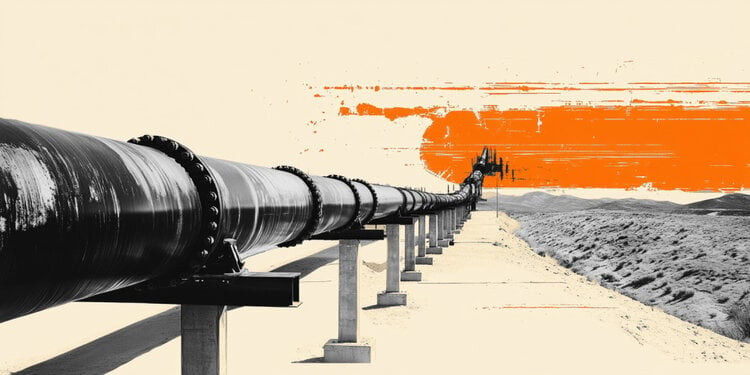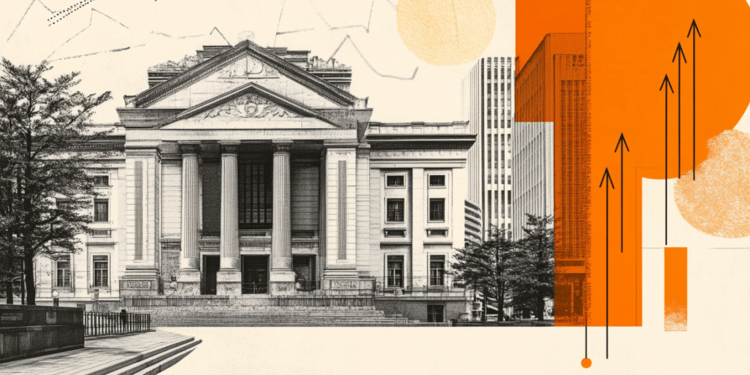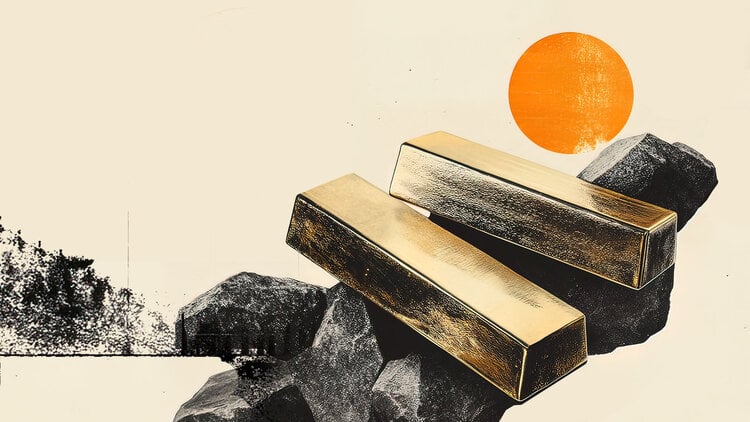Madonna‘s voice is gentle, but her words are heavy as boulders. The words of Madonna possess the gravity of a planet that has attracted love and hate, passion and criticism, obsession, and applause to orbit around her. «It was my destiny», she recounts, enunciating every single letter, «And I accepted it. I accepted it because it was what I had to do. I accepted it because this is the journey I had to take on this earth».
Pioneer and trailblazer, diva and pop star. After a 40-year career, today she’s preparing a new tour and a movie about her life. We meet her one winter’s afternoon at an anonymous spot in Bushwick, in the north of Brooklyn, New York. The sky is gray, the street quiet. A black van pulls up, a door opens and a petite figure steps out, sporting a black hoodie with a pair of copper-colored braids sprouting from it. Seconds later, this strange, dark version of Alice in Wonderland disappears through a door that leads to a warehouse.
There are no pallets of goods inside, however; instead there are clowns, artists, dancers, supermodels, make-up artists, hairdressers, stylists, and stage technicians. For two days, these people will spend every minute with her until 4 am They have all come together to bring to life an exclusive art project for Vanity Fair, created by photographers Luigi&Iango (you can see it on the pages that follow) which reflects on the career, values, creativity and provocations of an artist who has not only changed the history of entertainment, but contributed to the cultural evolution of the whole world . She has changed its direction and trajectory of her, like an extra moon causing the tides to shift.
Forty years of songs, provocations, shows, hits, criticism, and acclaim. How much has it all cost you?
«I could answer several billion, but then in what currency? That’s hard to quantify because taking risks and the artistic process is hard to measure. When you devote your time and energy working towards and fighting for things that other people don’t believe in, it can cost you time that you would otherwise spend relaxing or feeling comfort, or having an easy life. The thing it’s cost me the most is loss of sleep and maybe less time spent with people I love – also peace of mind. But I feel that it is a necessary part of the journey I am on and it’s a price I have accepted».
What has been the greatest victory and the worst loss of your career?
«Guiding my children to where they are in life, and feeling like “so far, so good.” That’s been the hardest battle».
What about in your career?
«I can’t really say, but the fact that I still have a career is my most beautiful victory».
Your worst loss?
«I don’t want to focus on defeat because I feel like everything is a victory – even things we perceive as loss».
I’d like to talk through this art project by Luigi&Iango for Vanity Fair with you. Let’s start with the image of the Virgin Mary—the Madonna—portrayed on the cover. You have always been attacked by the Catholic Church…
«Let’s start with the photos, just wearing a crown on my head and holding all the robes and balancing on this platform I felt like I was being attacked, just in this photoshoot. That was the metaphor for the question youre asking me. It’s literally hard to wear a heavy crown on your head. So how did it feel? The first time I felt really attacked was when I did the press conference in Rome while filming “Truth or Dare.” I was raised a Catholic and at the end of the day. I thought if the Catholic Church did not perceive my work as an artist as doing something good, then that was their problem and an extension of their narrow mindedness and inability to see that anything that brings people together, that preaches freedom of expression and unity – is a good thing. It mirrors the teachings of Jesus and Christianity at its core, so I felt like it was a hypocrisy for them to attack me».
You were one of the first artists to celebrate diversity. The icon of the Holy Mary on the cover seems to depict a reflection, a symbol of pain, of inclusion. A sense of motherliness and an acceptance of diversity…
«I am not really sure what it means to say I was one of the first. I felt that it was part of my journey as an artist to give a voice to others. When I started out in New York I was surrounded by a diverse group of people. The people who supported me were largely members of the LGBTQ+ community and of different ethnicities. That was my support system, so why wouldn’t I in turn support and champion them?».
There’s another very provocative religious image in the shoot: a Last Supper with all women instead of men… what was your intention in that tableau?
«Let’s start with the fact that it was Luigi&Iango’s intention to begin with; it was their idea and I thought it was an interesting take. As you know in the Last Supper Jesus is a man and he’s surrounded by male disciples. So I thought it interesting that we would flip the tables around (so to speak) and Jesus would be feminine energy and I would be surrounded by female disciples. I liked the idea we were playing with that contradiction, which isn’t really a contradiction».
What is your relationship with religion today?
«I think it’s important to have ritualistic behavior and a spiritual life. Religion without understanding, knowledge, curiosity, and inclusiveness – I don’t consider that to be religion. I’m not subscribing to religious groups that are exclusive of others or extremist in any shape. However, I do respect all religions and encourage people to look into whatever religious belief system they follow. To understand and study their holy books and to understand their ritualistic systems, because otherwise without understanding it’s just dogma and rules, and an empty exercise. My relationship with religion is that I remain very involved in my own spiritual practice and I think it’s imperative for everyone to have a spiritual practice – but I am not defining that for other people. I do think it’s vital to pray and to have connection with some spiritual lifestyle / life force or whatever you want to call it. There is just no way you can survive and get through life without connecting to the idea that there is a higher power and energy force – many energy forces. That there is a metaphysical, mystical world that we are all a part of and need to stay connected to».
In another image, you’re portrayed as a fragile doll—a toy that can be broken.
«Once again, I followed the photographers’ idea. And I saw in it the idea of fragility of being a woman—fragility that comes from not connecting with your inner strength. It’s that lack of connection that makes us feel like broken dolls».
Have you ever felt that way?
“Many times. I don’t think it’s possible to be a female artist or a human being without feeling broken or hurt. You’re a human being and that’s how life goes. There’s no life without that feeling».
In another image you appear hanging from a rope, surrounded by bullfighters, abused by men. Is this a reflection on the patriarchal culture and misogyny that continues to characterize society?
«It’s a continuing battle, we do indeed live in a patriarchal world. I’m always fighting against it, pushing against it, or feeling the resistance from it. That tableau was a metaphor for it – I was hanging from a rope, my feet barely touching the ground and I had matadors around me with very long nails as sharp as knives and masks hiding their faces so I couldn’t see their eyes. Everything had an air of danger to it. The idea was I am fighting against the patriarchal world that we live in, which has always been the case for me. I was spinning from one side to the next, one side not aware, sometimes I’m cut, or bumping into things. There’s an element of mystery, of not knowing how things are going to turn out. Traditionally the matador is attacking the bull».
As society, are we moving on from that world?
«We definitely are not moving on, we are moving backwards. Otherwise, we wouldn’t be having discussions on whether or not women are allowed to make choices over their bodies in America».
Are you a pessimist?
«I have to be optimistic otherwise I don’t know how I could go on».
In another image you’re playing with a cellist. You have discovered so many authors, so many talents, so many artists. Who do you like today? Who inspires you?
«That’s a difficult question. I like all artists who have the courage to tell true stories, stories of vulnerability. I’m a big fan of Kendrick Lamar. He’s an incredible artist, his music is incredible. The words he uses are powerful. He’s been able to tell the story of generations that have been the victim of abuse, of drugs, of absent fathers. Its groundbreaking and takes music to a whole new level. Rapping, healing and talking about it at the same time and being very truthful. Clearly he’s done a lot of soul searching, reading and self-examination. I really admire artists who do that and turn it into something that connects with pop culture».
Let’s get to the image in which you’re portrayed as Frida Kahlo, next to a man. This Mexican artist has been a kind of guide on your career.
«When I was a teenager I discovered Frida Kahlo at the Detroit Institute of Arts. I was fascinated by how she became a painter—how it stemmed from a bus accident where she was lying a hospital on her back di lei in a bodycast, in pain for a year, and how her father di lei brought her brushes and paint. While she was working through her pain and her inability to move, she used her arms to paint and turned her suffering into something beautiful. She always felt like an outsider as a child growing up and I could connect to that. If Frida Kahlo could endure all the pain and suffering and still create beautiful art and not feel sorry for herself and continue to go on, then I could do the same. She’s always been a source of strength and a muse for me».
There are several clowns in this photoshoot. How how?
«I like the paradox of the clown. A clown dresses up, paints her face, comes on stage, and makes people laugh. But there is some kind of strange darkness that goes with it. Somehow deep down inside you feel the sadness of that clown. That clown is trying so hard to make other people laugh so that he or she can keep from crying. I like that juxtaposition as in the song “Send in the Clowns”. The lyrics are so beautiful – here I am, I’m going to make you laugh, but inside I am crying. I like that diametrically opposed dynamic. I feel that’s true of many entertainers and comedians and I am fascinated by that».
Source: Vanity Fair
I’m Susan Karen, a professional writer and editor at World Stock Market. I specialize in Entertainment news, writing stories that keep readers informed on all the latest developments in the industry. With over five years of experience in creating engaging content and copywriting for various media outlets, I have grown to become an invaluable asset to any team.







